Kia ora and welcome to the July/August 2020 update from the Transmission Gully team.
Since our last update in June we have continued to make good progress, given the expected weather challenges at this time of year. We are looking forward to getting to the other side of the more difficult winter work conditions as we continue to build up our construction rate to pre-COVID-19 levels of work activity. This includes weekend shifts and nightworks at a number of places, when weather allows.
The flip side of the wet weather is that it is great for planting. Our environmental teams have kept up the push to get plants into the ground while the earth is wetter. If you drive through the SH58 Pāuatahanui interchange, you’ll see closely planted young saplings covering the embankments on either side of the overbridge.
Our timelapse video footage of the Wainui Saddle area below shows the progress we’re making in the most challenging earthworks area of the build.
Our construction update and aerial photos give you a closer look at progress right along the 27 kilometre alignment. The before and after image of the project’s largest structure, the bridge over Cannons Creek, gives a great picture of progress as sections start to show the final form they’ll have.
We continue to remind all members of the public to stay safe and not enter the project site at any time. Work is underway in multiple areas along the 27 km route and it remains a high hazard area.
If you have any questions please contact us at info@tg.co.nz. If you have an urgent matter, please call the 24-hour project hotline on 0800 TGINFO. If we are working outside of our normal work hours and you’re one of our neighbours, we’ll be in touch with you directly as usual.
One of our most active work sites is the Wainui Saddle, which is the highest point on the new road and marks the boundary between Porirua City and Kāpiti Coast District. This short section of road represents only 800 metres of the 27 kilometres of new motorway but is one of the most complex earthworks challenges on any project in New Zealand, due to the scale of the work, steepness of the terrain, and the Ohariu earthquake faultline running right through the middle of the saddle.
As we continue to dig deeper towards the final road level, we are encountering more of the dark grey rock crushed by the faultline that needs extra stabilising with concrete. The timelapse video above shows our teams have been working around the clock to keep up the construction momentum on this section of the project, and this area of significant work is now clearly visible from as far north as Raumati.
Here are a few statistics to give you an idea of the scale and complexity of just this 800m section of the motorway’s construction:
The Wainui Saddle is a big job and it’s not finished yet, but strong ‘bones’ are in place for this challenging section of road that will take traffic between Pauātahanui and Mackays Crossing at Queen Elizabeth Park.
Earthworks and drainage are continuing up the Te Puka Valley from Paekākāriki to the Wainui Saddle. Rock excavated from the saddle area is being carefully placed as fill to build up the road layers. We can keep working in wet winter conditions by adding lime which dries out the material to ensure it meets required specifications for strength.
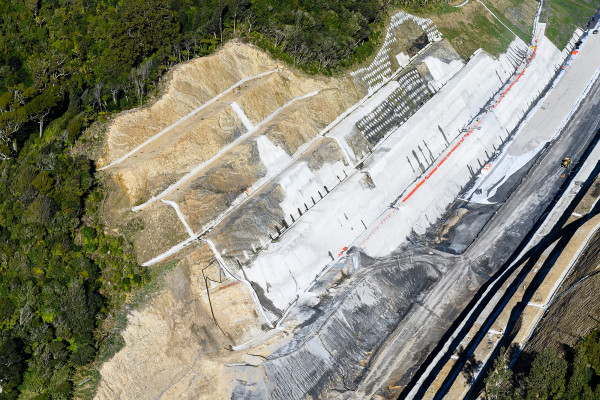
Wainui Saddle – working on the last bench (step in the bank) to get down to final road level. The dark grey rock visible in the lower layers has been fractured and crushed by the faultline in this area, so requires additional mitigation and strengthening with shotcrete.
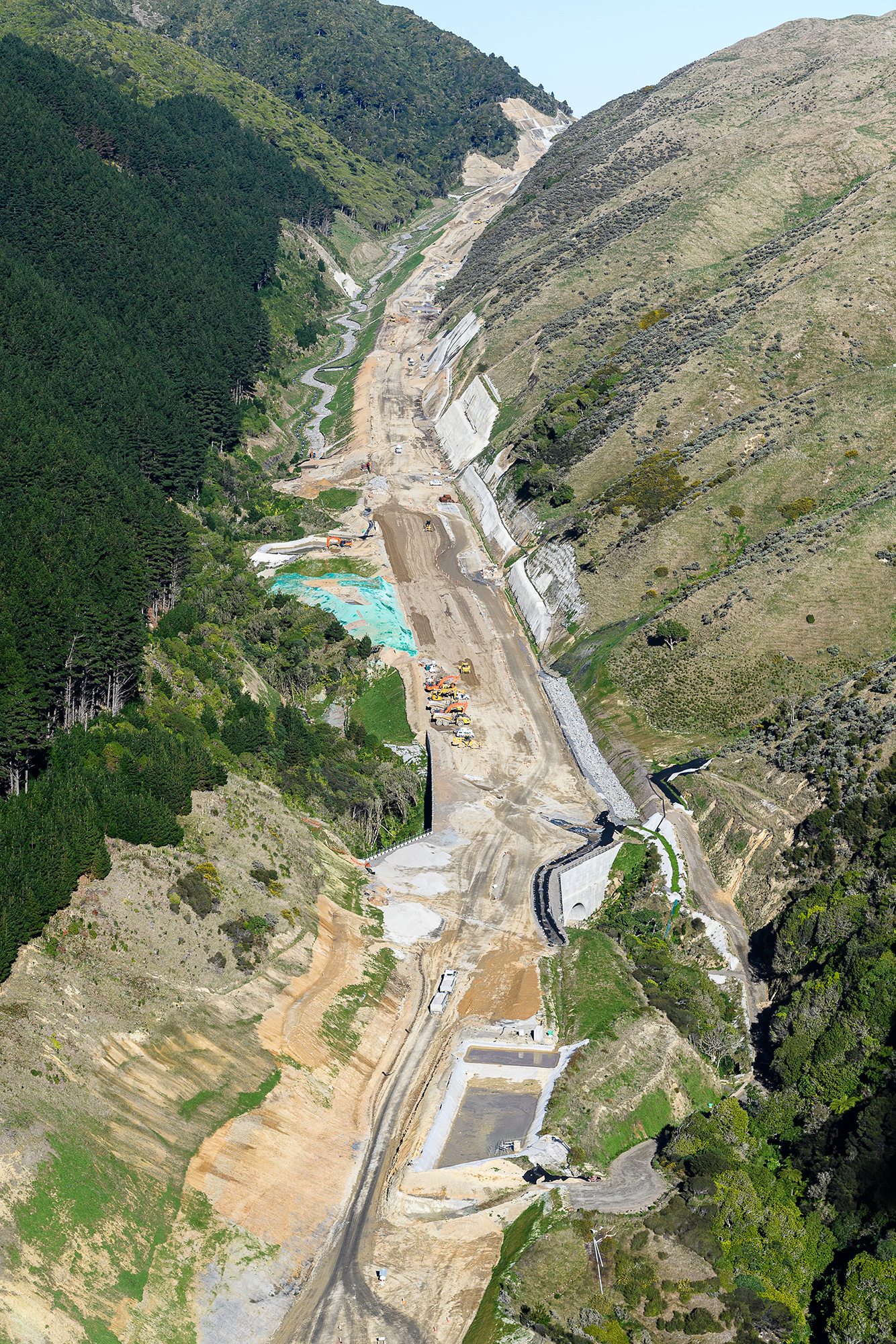
Earth and drainage works continuing south up to the Wainui Saddle.
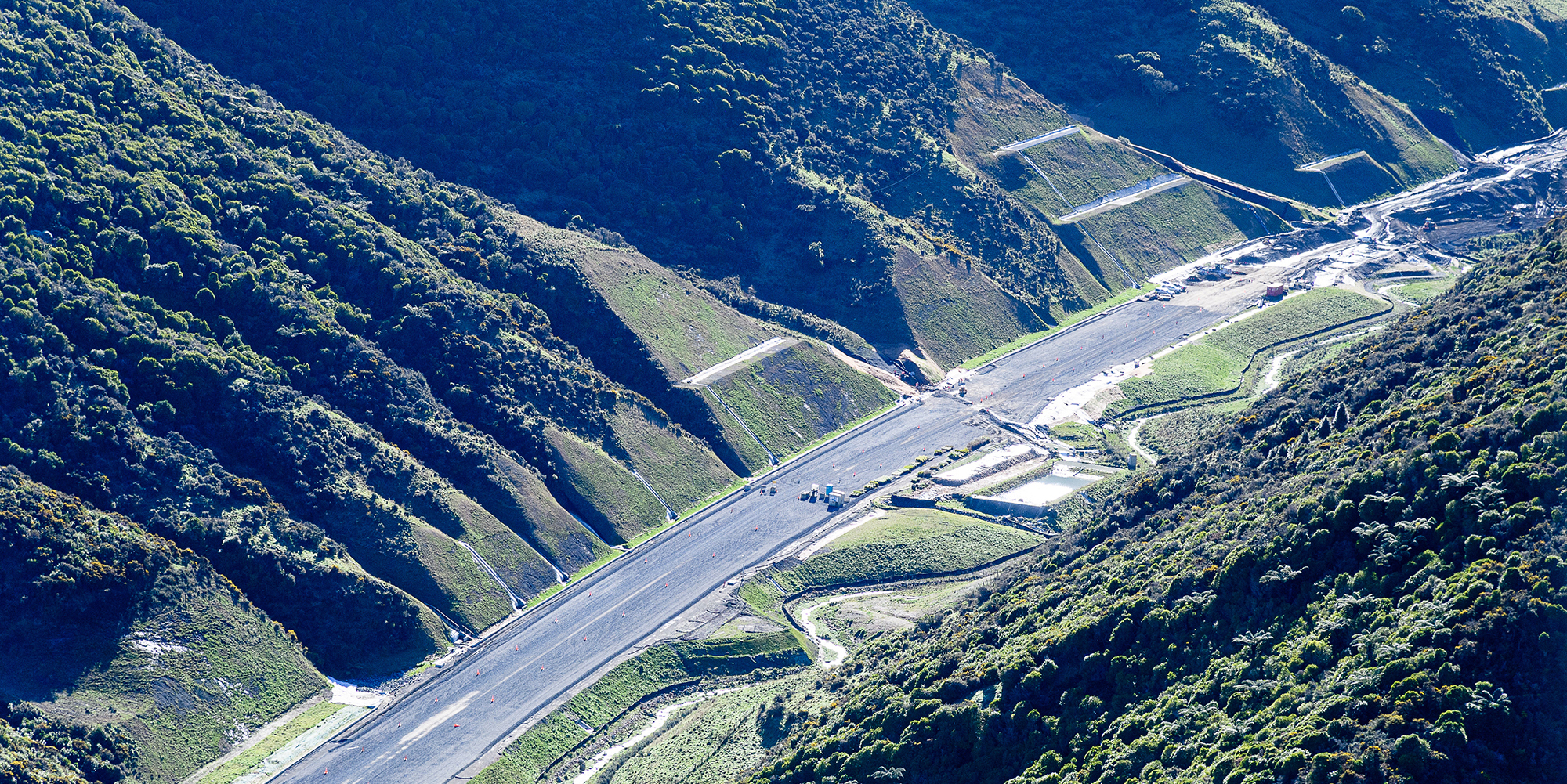
Completed sub-base in the Horokiri valley, with the stream diversion visible in the foreground. A short section of earthworks is underway at the north end (top right corner) of the photo above, to complete the earthworks up to the pre-paving level.
We are bringing in over 150 truckloads of pavement aggregates every 24-hours and stockpiling on site in this area to prepare for spring, when these quantities will be needed quickly for re-commencing pavement (road surface) construction.
Construction traffic is using Bridge 13 at Lanes Flat (on the site of what will be the SH58 Interchange) to get from one side of SH58 to the other and complete the embankments. Landscape plantings are now visible on the sides of the interchange area, including trees in protective enclosures.
Further to the south, the James Cook Interchange is really taking shape with earthworks for the roundabouts and approach to the Link Roads to Waitangirua and Whitby largely complete. Final plantings are going in on the main embankments, as is the street lighting.
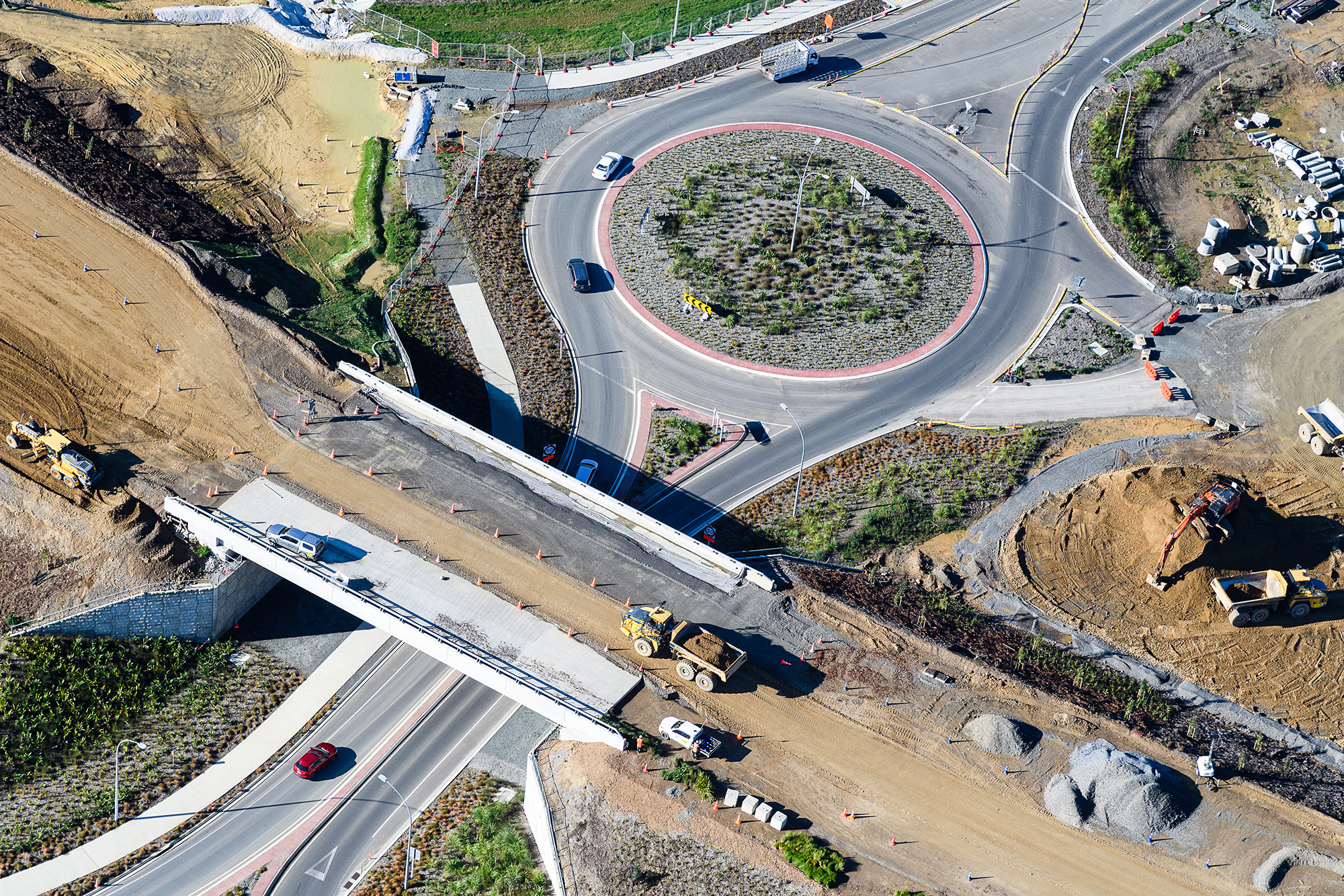
Bridge 13 at the SH58 Interchange in use by construction vehicles.
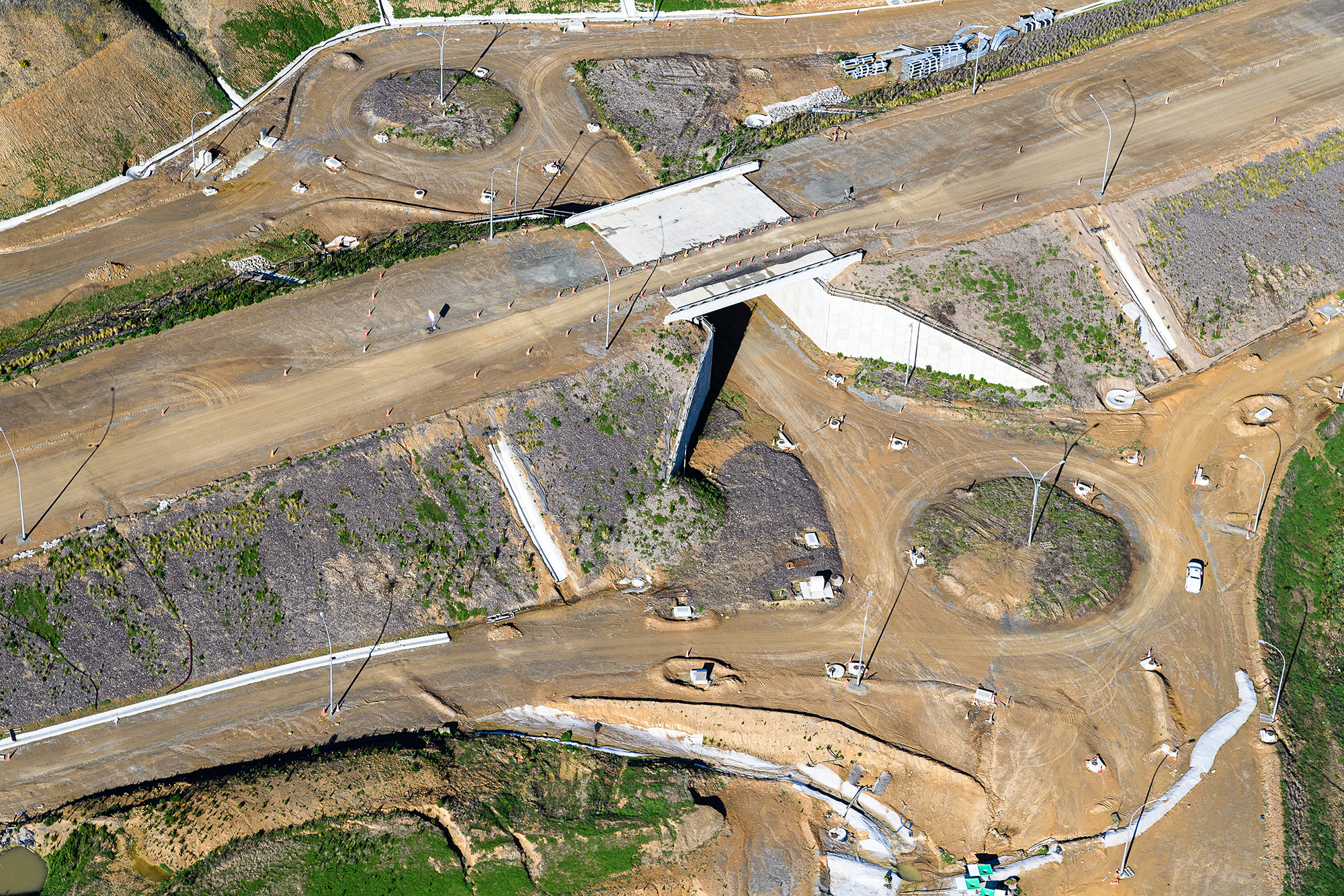
James Cook Interchange taking shape, where the link roads from Porirua connect.
To the north of the now completed Bridge 20 over Cannons Creek, there is ground stabilisation work continuing before we place subgrade (the compacted material which will form the base for the road surface) in the coming weeks. The progress on the bridge barriers since March is evident in the photos below, with barriers now largely complete.
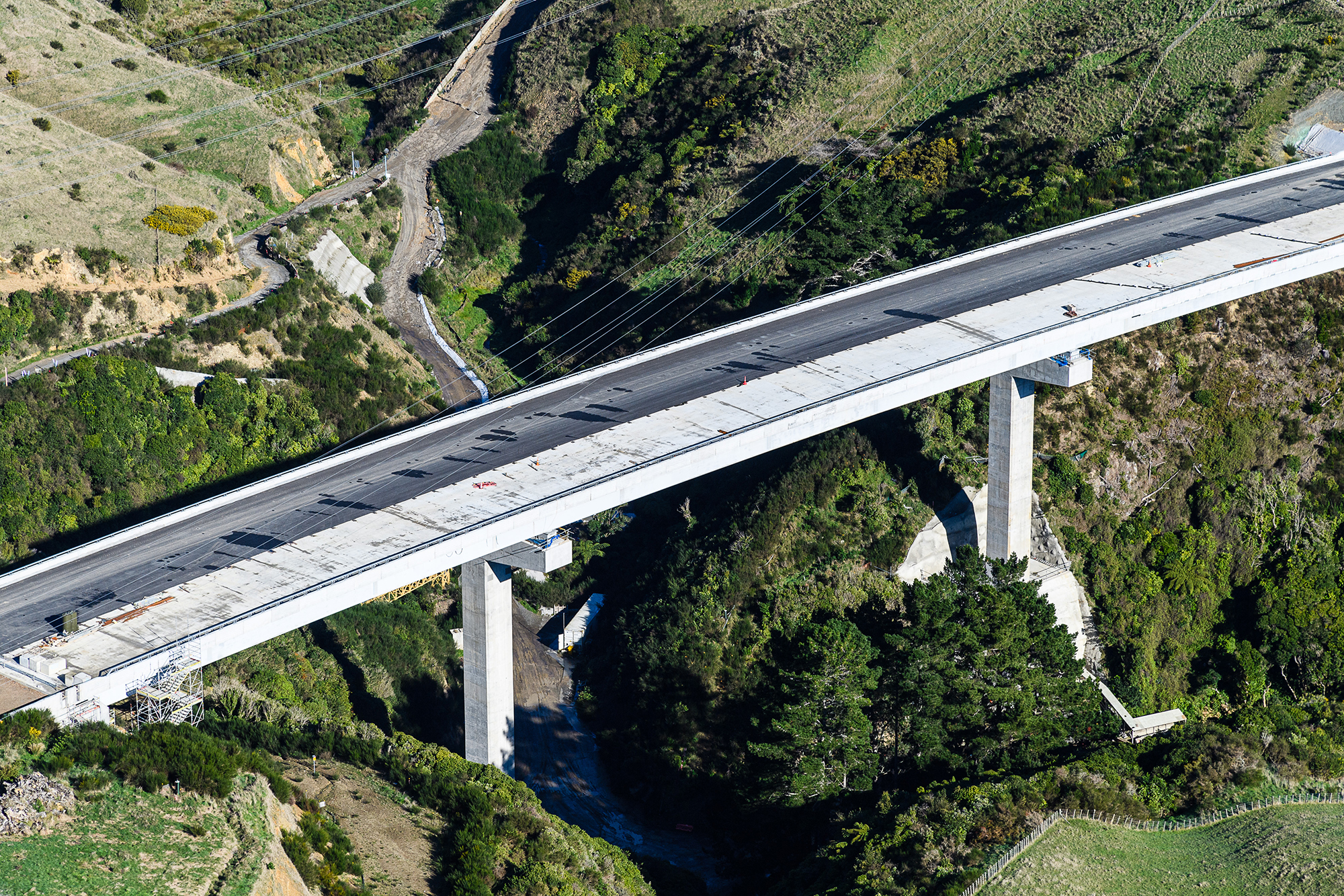
Surfacing layers going down on Bridge 20.
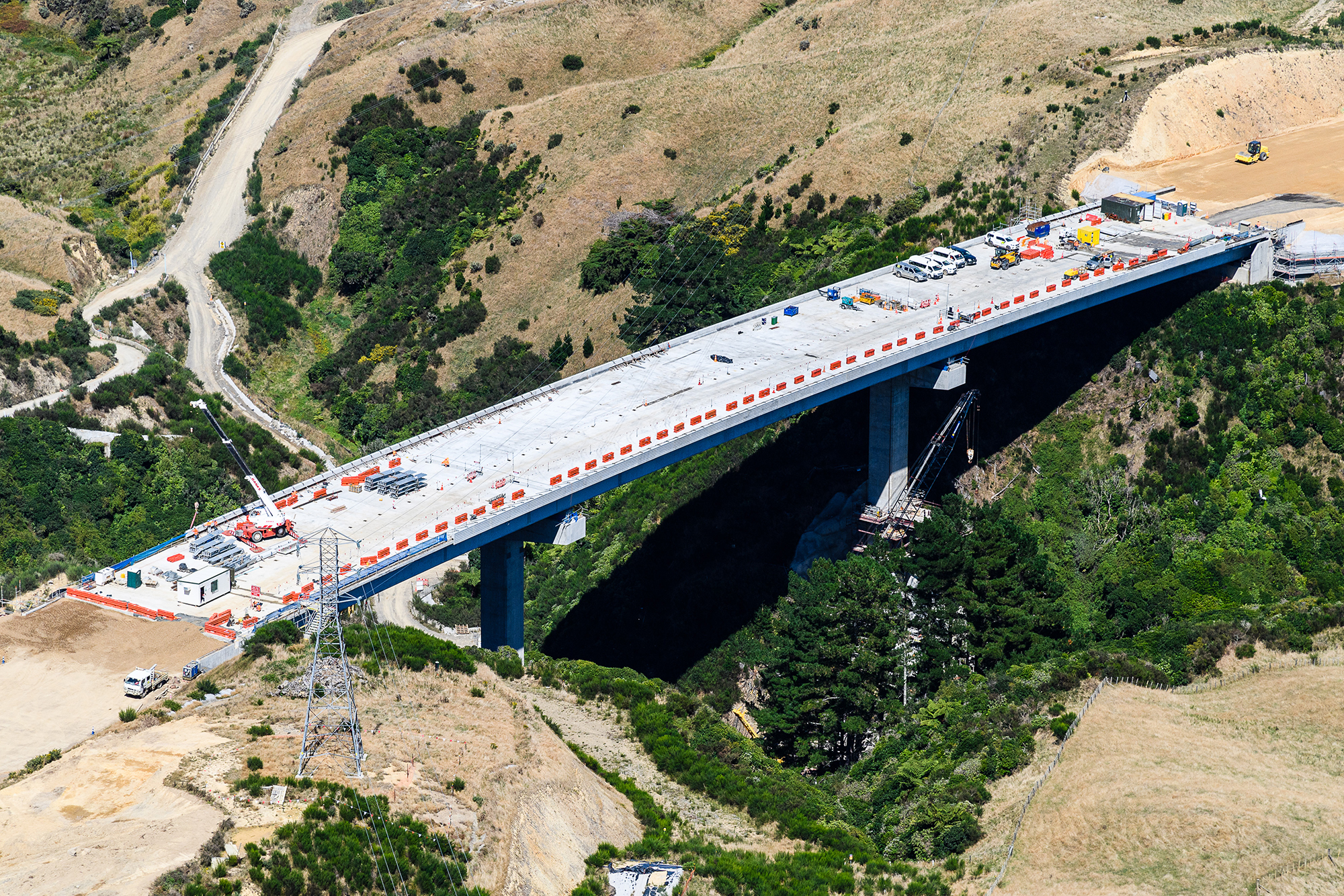
Bridge 20 – how it looked in March 2020.
The Kenepuru Interchange is also nearly ready for pavement (road surface) works. The paving sub-base layers are visible north of the interchange. The grassed batters (banks) that help stabilise the earth areas around the interchange have been enjoying the wet weather!
On the Kenepuru Link Road bridge across SH1, we have installed settlement slabs and earth walls around this structure. Our site vehicles are now able to use this bridge to get from one side of SH1 to the other. We are continuing to finish the noise walls for the bridge and plan to finish drainage works around Arthur Carman Park and reinstate Collins Avenue over the next couple of months. Work at the roundabout at Kenepuru Drive is getting ready to re-commence within the next month or so, with tweaks to the design nearly complete to ensure it will work well with all the other improvements being made by Porirua City Council along the roads around the new motorway.
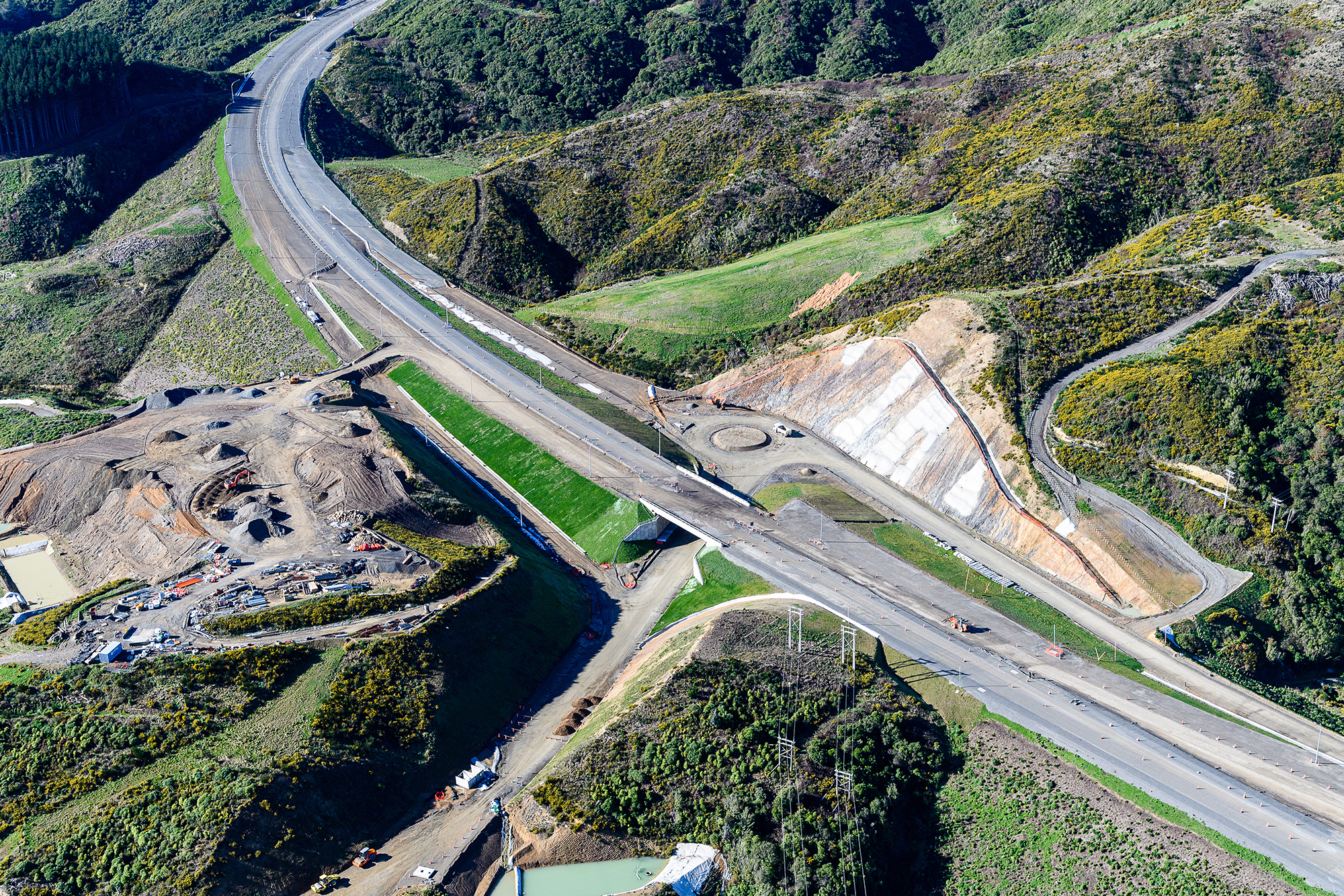
Kenepuru Interchange with paving continuing north.
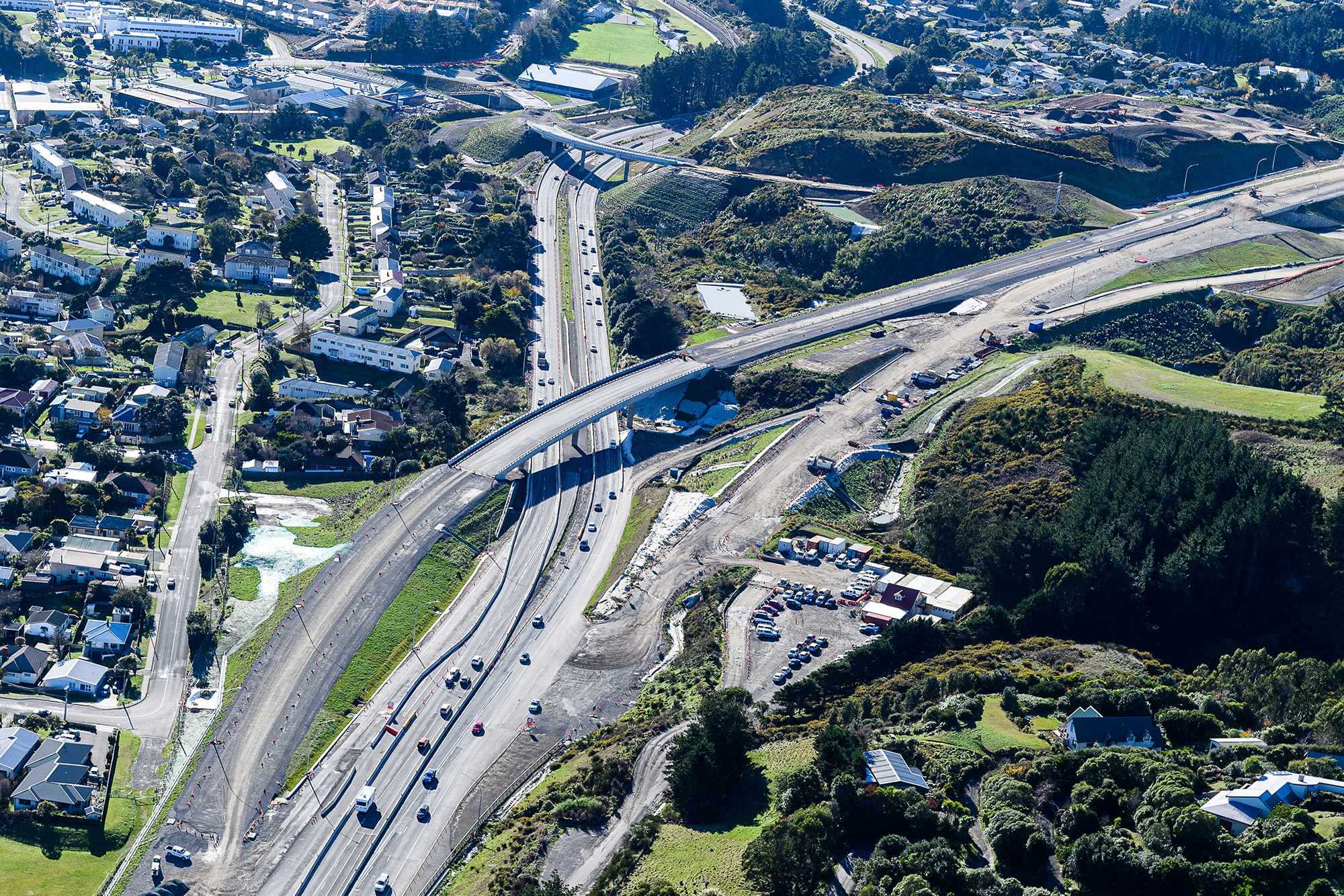
Interchange with SH1 at Linden working on the southbound connection.
We have nearly completed stream diversion work below the Willowbank Quarry. We also have other environmental maintenance activity, fencing and mitigation and landscape planting in construction areas throughout the project.
The quarry has reopened and is in maximum production, delivering aggregate for pavement work throughout Transmission Gully. Most of the aggregate deliveries are happening at night to maintain safety along the busy SH58. We are very grateful to local residents and neighbours for their continued patience over the next four months or so while these night operations are needed.
Finishing work is continuing on many of the 25 structures we have built along the route. ‘Finishing’ includes activities such as installing the barriers that will safely separate traffic on the road, as well as hundreds of kilometres of ducting for all the operational services required, including the specialised cabling that will enable Transmission Gully’s intelligent transport systems (ITS) to operate and monitor traffic flows.
Don’t forget to tell your friends and family to sign up to receive the latest project news.
Subscribe to email updates(external link)
We hope you enjoy reading these updates, and we’d love to hear from you. If you have any questions, comments or story suggestions, you can email them to info@tg.co.nz
For the latest traffic updates follow us on Twitter and Facebook: